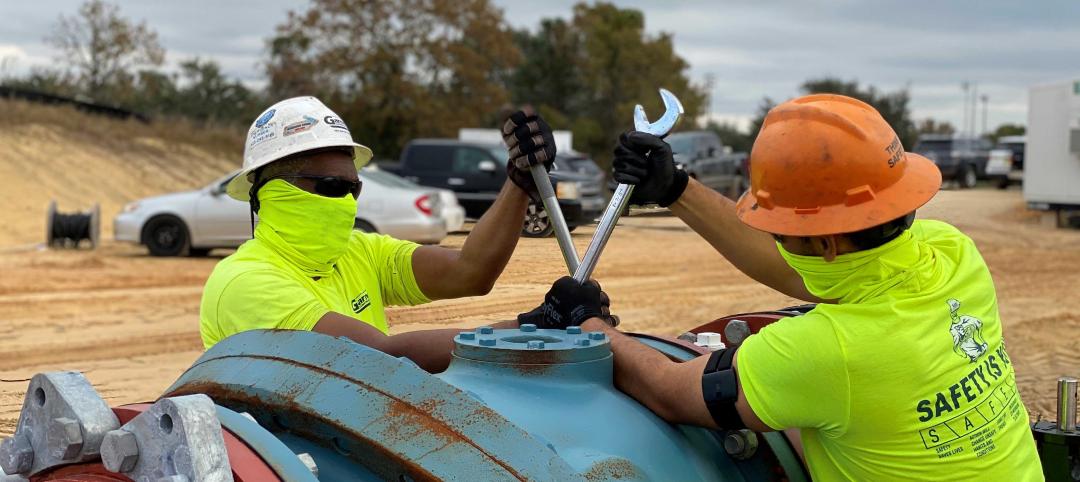An expanding engineering and construction industry faces a digital future that is not only reshaping cities but also how the industry’s businesses operate.
This is one of the key observations that Deloitte Consulting presents in its recent paper “2019 Engineering and Construction Industry Outlook.” The paper’s author—Michelle Meisels, Principal and Engineering and Construction Leader—emphasizes the centrality of data analysis in the ability of the industry to deliver urban projects for cities whose buildings and infrastructures are becoming “smarter” and more connected.
Deloitte anticipates that the industry’s growth in the U.S.—estimated at around 5% in 2018—will continue next year. Merger-and-acquisition activity, which this year has accounted for at least 344 deals valued at more than $20 billion, is allowing EC firms to compete for megaprojects “infused with advanced technologies.”
Meisels sees cities as growth engines for the U.S. economy and its society. However, America’s crumbling infrastructure right now isn’t up to the task of keeping pace with urbanization. She’s optimistic, though, about the willingness of cities around the world to invest in “connected infrastructure” that enables better management of urban assets such as public transit, wastewater systems, and roads. Meisels cites one estimate, from IDC, which projects that smart cities’ spending will reach $158 billion globally by 2022, with Singapore, Tokyo and New York being among the top spenders.
These investments should help to create digital touchpoints of connectivity between people and their vehicles, homes, and workplaces. What would advance this movement, says Meisels, is “a clearly articulated strategy for leveraging advanced technologies like the Internet of Things (IoT), analytics, and artificial intelligence.” She points specifically to the recently announced alliance between AECOM and Arrow Electronics as an example of how scale and digital are intersecting.
Digital, in fact, is transforming how engineering and construction companies run their companies. Such things as robotic process automation and BIM are evolving and improving in ways that are making project development and management far more efficient and less costly. Meisels also speaks of “connected construction” tools, such as drones, wearables, and augmented reality, that are “revolutionizing” job sites, improving worker productivity and safety, and capturing valuable data.
Meisels believes that data and analytics will become the industry’s future core. But data are coming from outside traditional ERP systems, so companies need to devise a strategy to analyze this torrent of information “to deliver smart buildings and smart cities projects, identify and address diminishing margins, and manage increasing project size and complexity.”
Companies can use a data-driven approach to unlock smart decision making, identify the optimal location for their project, and source the best materials to use, all through an interface that enables decision makers to ask questions and work through scenarios.
This analytical approach might also provide some answers to a problem that continues to vex EC firms across the country: finding and retaining talent.
The U.S. construction industry has been consistently adding workforce, and currently employs around 7.2 million professionals, the highest levels since the Great Recession of 2008. But that’s still an 18-year low. “Labor shortages are reaching crisis proportions and are expected to continue through 2019,“ predicts Meisels.
Today, winning the talent war includes projecting a positive brand for your company out to the market—one that reflects the advanced technologies that are part of the connected construction site. To appeal to new generations entering the workforce, that brand should also showcase the sustainability initiatives that many firms have adopted.
On a fundamental level, Meisels tells EC firm that their talent search should be buttressed by their support of apprenticeships and technical schools. “And considering the rise of digital, it is also important to understand how skills are changing and then design a talent management strategy that reflects this,” she recommends.
Related Stories
Glass and Glazing | Sep 30, 2021
Plans move forward on Central Place Sydney, duel towers with an AI-driven façade system
SOM and Fender Katsalidis are designing the project.
Resiliency | Aug 19, 2021
White paper outlines cost-effective flood protection approaches for building owners
A new white paper from Walter P Moore offers an in-depth review of the flood protection process and proven approaches.
Wood | Jun 10, 2021
Three AEC firms launch a mass timber product for quicker school construction
TimberQuest brand seeks to avoid overinvestment in production that has plagued other CLT providers.
Building Technology | Jun 1, 2021
Orro Announces Google Nest Integration for the Orro Switch
Orro, creators of the professional-grade top-of-the-line Orro Smart Living System, today announced the integration of Nest products to Orro. As a certified partner in Google’s Device Access program, this latest Orro integration allows homeowners to have seamless control and access to Nest thermostats and doorbells from any Orro Switch throughout the home – creating a single unified smart home system with advanced, intelligent ambient control.
Coronavirus | Mar 11, 2021
The Weekly show, March 11, 2021: 5 building products for COVID-related conditions, and AI for MEP design
This week on The Weekly show, BD+C editors speak with AEC industry leaders about building products and systems that support COVID-related conditions, and an AI tool that automates the design of MEP systems.
AEC Tech | Mar 4, 2021
The Weekly show, March 4, 2021: Bringing AI to the masses, and Central Station Memphis hotel
This week on The Weekly show, BD+C editors speak with AEC industry leaders about the award-winning Central Station Memphis hotel reconstruction project, and how Autodesk aims to bring generative design and AI tools to the AEC masses.
Building Technology | Feb 10, 2021
Garney Construction trials new heat stress prevention device
The device helps to prevent heat injuries on job sites.
Modular Building | Jan 26, 2021
Offsite manufacturing startup iBUILT positions itself to reduce commercial developers’ risks
iBUILT plans to double its production capacity this year, and usher in more technology and automation to the delivery process.
AEC Tech | Dec 8, 2020
COVID-19 affects the industry’s adoption of ConTech in different ways
A new JLL report assesses which tech options got a pandemic “boost.”
Contractors | Dec 4, 2020
‘Speed to market’ defines general contractor activities in 2020
Contractors are more receptive than ever to ways that help get projects done faster.

















